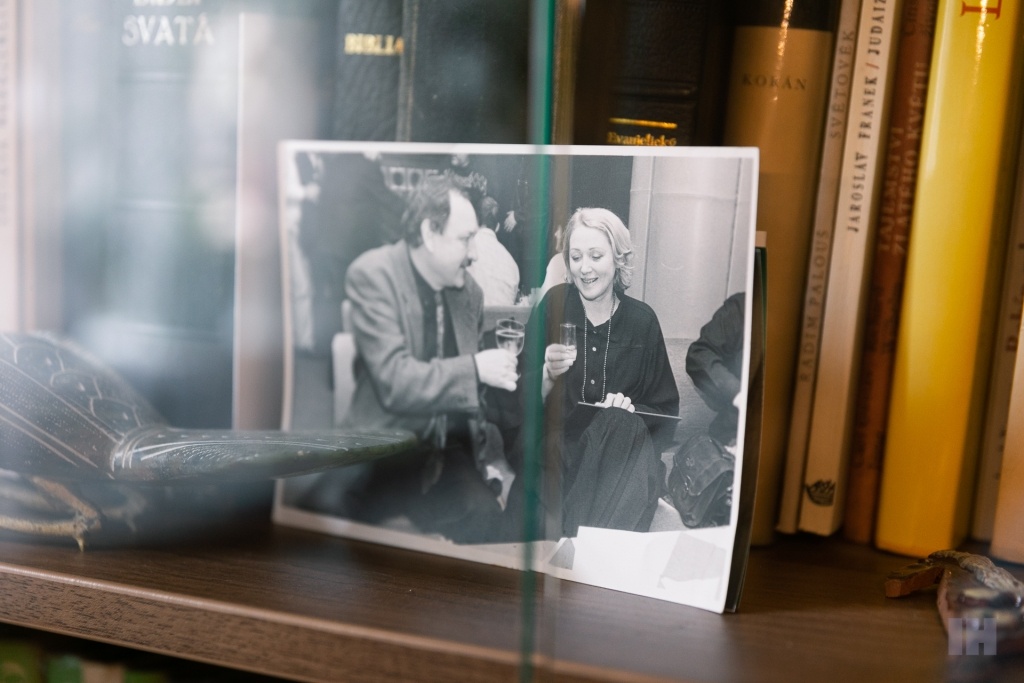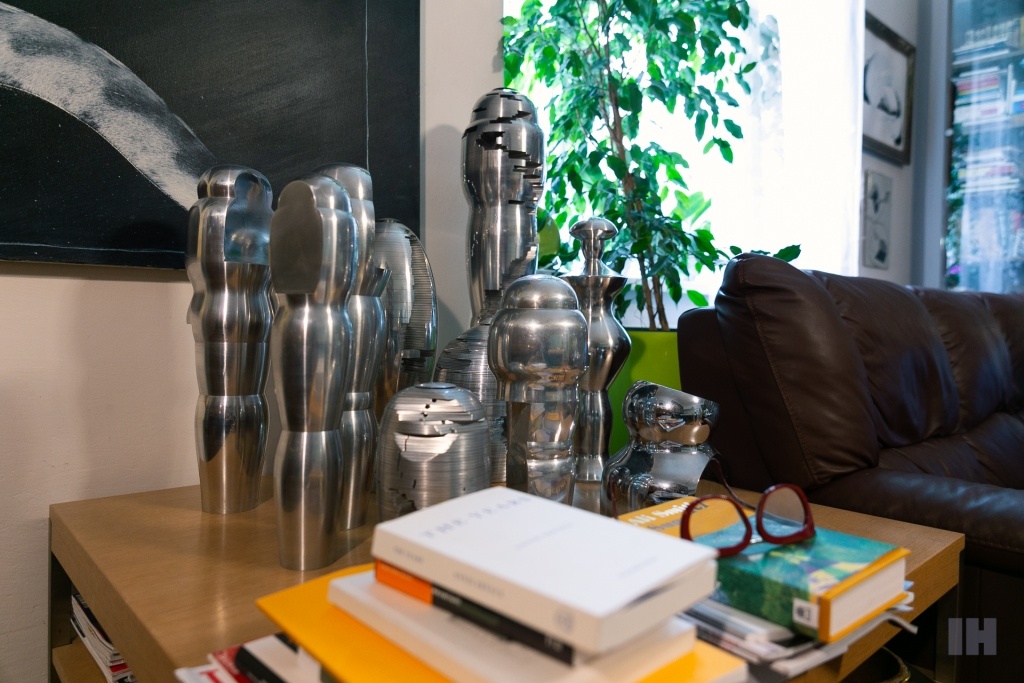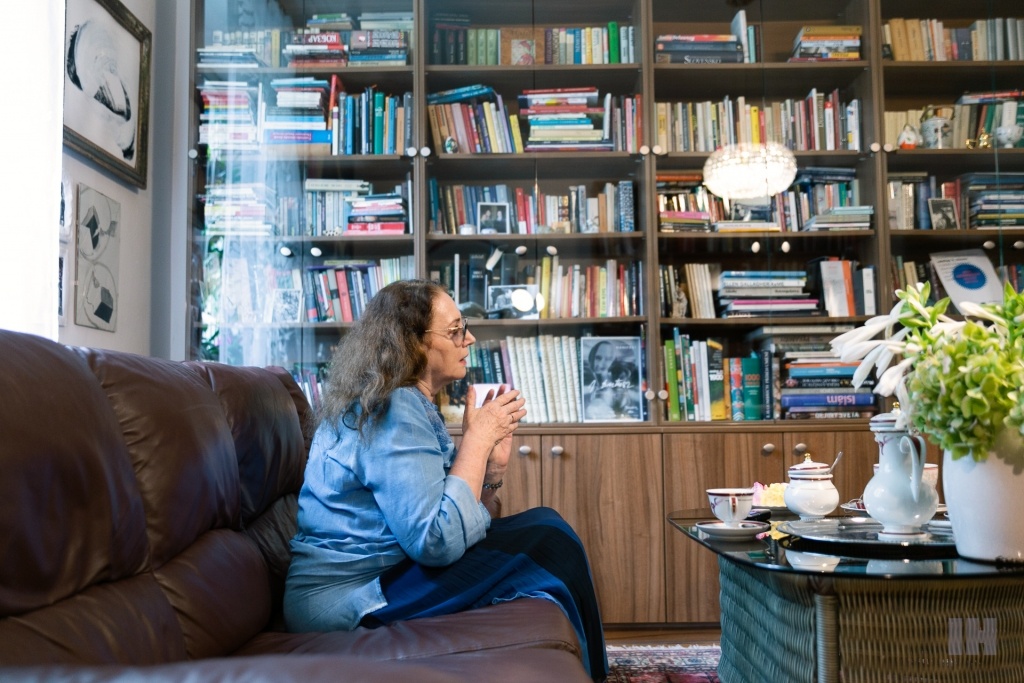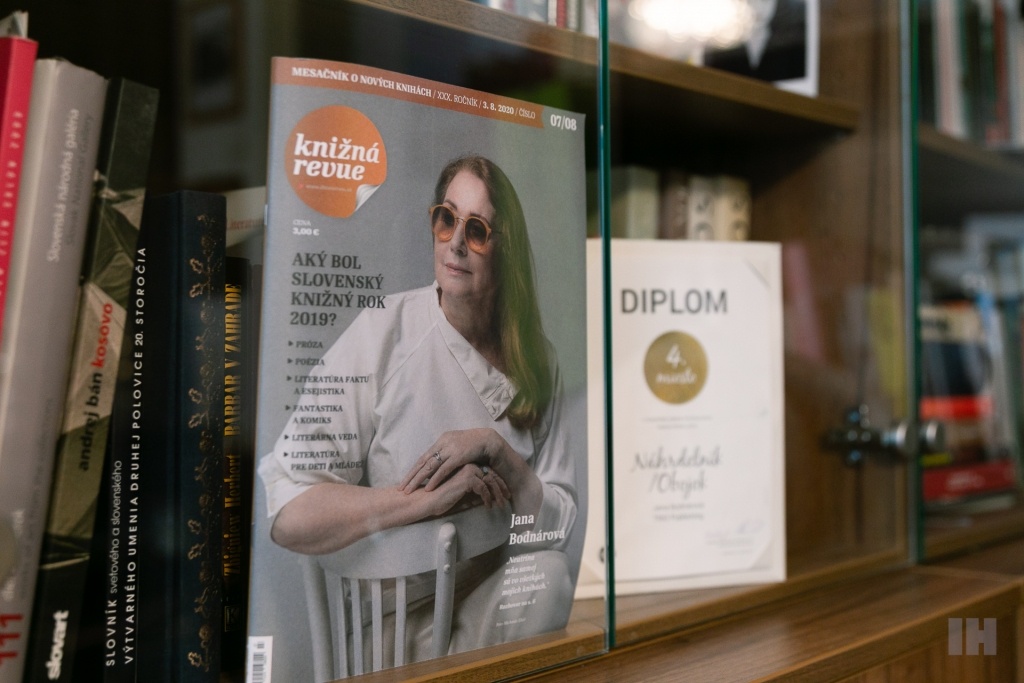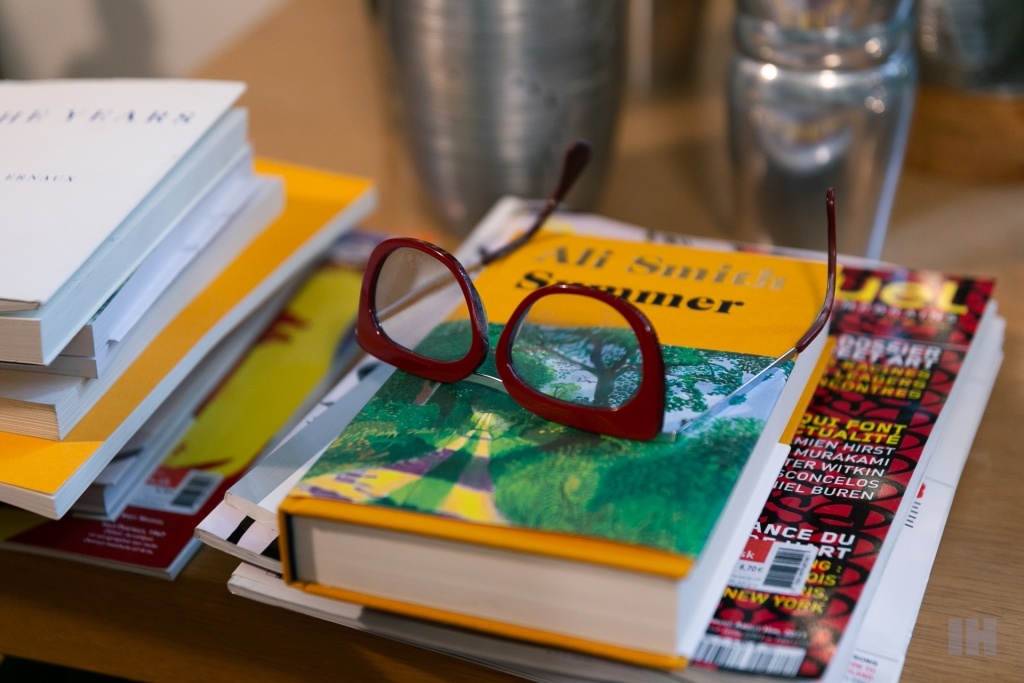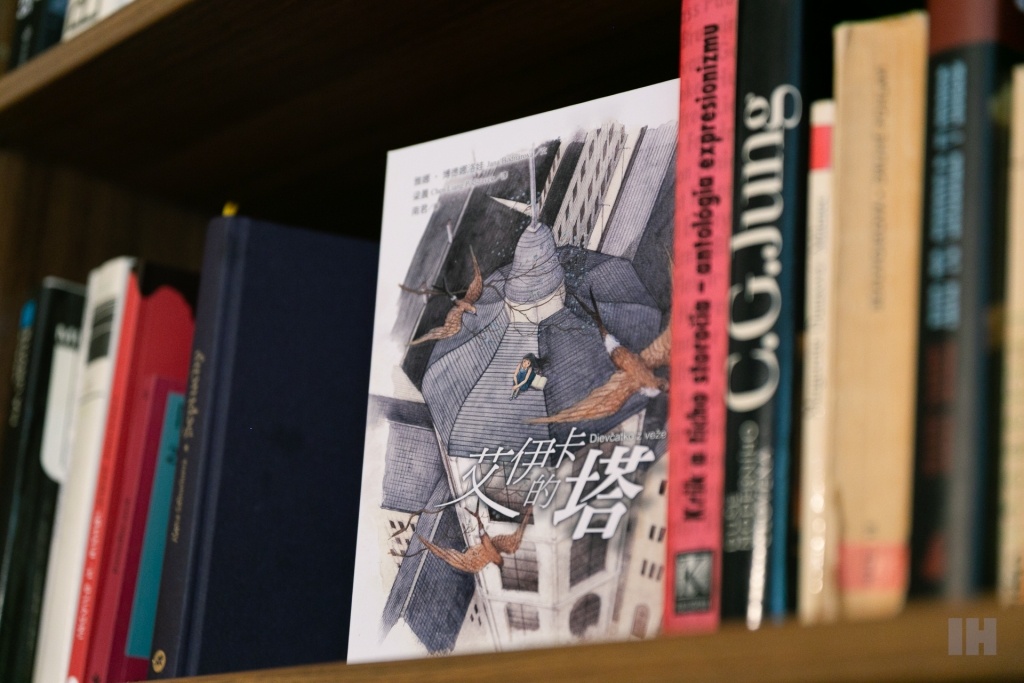Memories help us to maintain the integrity in thoughts and emotions, says Anasoft litera nominee, Jana Bodnárová
She wrote her first short story when she was only 11 years old. Today, she is one of the most popular contemporary female writers in Slovakia. Her main focus is on capturing the themes of modern and new women, the ultimate solitude of the individual and the phenomenon of memory – according to the nominee of the literary award Anasoft litera, it strengthens human wholeness and integrity. How did the author’s abilities and hypersensitivity come to existence to portray not only female protagonists of the 20th century?
Burghers’ style clothing
She spent her childhood in Jakubovany near Liptovský Mikuláš, in a poor village of small farmers under the hill Baranec. Jana’s family differed from the others in their way of life and social class, her father owned a general store and an inn where her parents spent all their free time. Because of the work in business, the three sisters and other village children often wandered alone, which gave birth to a lifelong theme of loneliness and a relationship with nature in the future popular writer.
“We were a little separated from the others, while the villagers still wore blueprint dresses, my mother wore a burghers’ clothes. As a child, I was sentenced to solitude, my parents didn’t have much time for us at all, so we wandered through meadows, fields, forests. I came into close contact with all the beauties of nature and its brutality – the death of animals, for example, has become a common and natural phenomenon. As well as saying goodbye to the deceased. I think that during this period I developed the much-needed instinct, intuition and especially the ability to observe everything around, even the hypersensitivity, which are so necessary for a writer. These qualities came to me like an unwanted gift. My childhood was beautiful, but at the same time, melancholic and dramatic – and the fact that I am essentially a loner has remained of it to me to this day.
My father has taught me all about having a relationship with literature – as a merchant, he took books from the Society of Friends of Beautiful Books, he read and smoked in the bedroom during evenings (because in the 50s, everyone did so everywhere, not only in movies) and wrote poems on the back of delivery notes. Apart from us, only the teacher and the pastor had books at that time.”
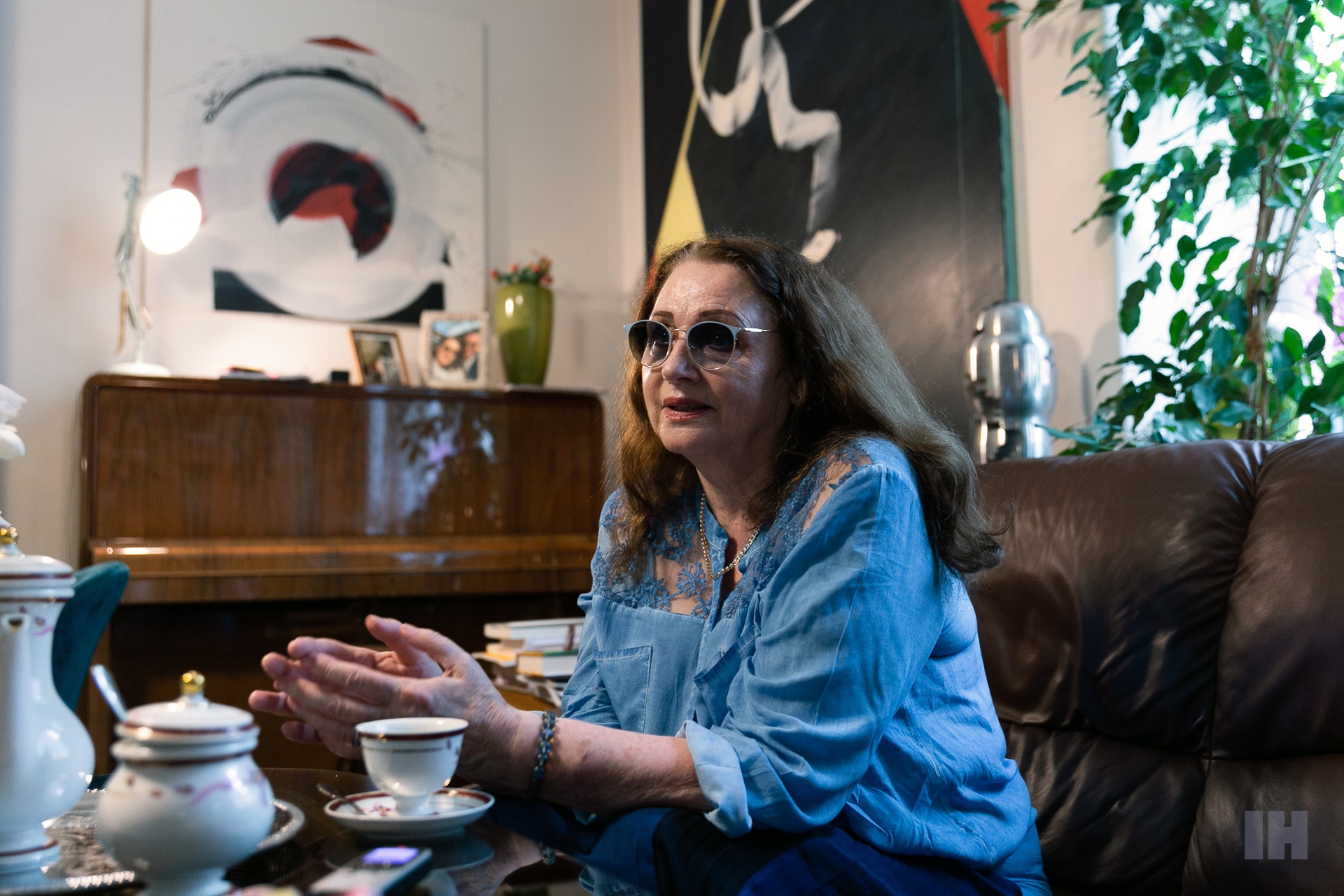
“Jana, you’ve got talent.”
Jana became acquainted with writing as an 11-year-old elementary school student. During the Slovak language and literature subject, her class was given a topic about the Slovak National Uprising. Near Liptovský Mikuláš, in the village Okoličné, there is a Gothic church of Bavarian type architecture. Jana used the church in her first story about a partisan who is hidden in a crypt by a local priest. “To this day, I remember how my teacher supported me with one sentence – ‘Jana, you’ve got talent.’ I was interested in different styles, tendencies, features, but especially in contemporary art. I started writing art theory texts when I later worked as a conservationist. It was a valuable experience with a strong sense of the structure and consistency of the text. I wrote my children’s stories to my children, which were published in various children’s magazines and later published in the collection Malí, väčší, ešte väčší.
I handed over my first book, Aféra rozumu, to a publishing house at the age of 36, but I waited four years for the publishing house to release it in 1990. Until that moment, I had no idea how crypto-anti-Semitism was deep-rooted in our country, due to which the book was postponed for such a long time. Among other things, I dealt with topics about Judaism, about its fate in our country during the socialist regime – using my own memories of Liptovský Mikuláš from that period. I discussed this topic in much more detail in the novel Náhrdelník / Obojok.
Closely related to my writing is the study of political and social conditions and the so-called history of the commonalities and habits from the period of the work that I am writing. An example is my latest novel Koža, which was nominated for the Anasoft litera award. In it, I tried to capture the atmosphere of a bourgeois family from our small town and the atmosphere of Berlin from the times of the Weimar Republic. The story takes place between 1900-1933. The main character is the painter K., who in the period before the Second World War was looking for her own independence and identity. She is an admirer of the German painter Paula Becker, one generation older. I can more easily empathize with protagonists with a similar professional focus like I have because I have been working in the field of the visual arts for most of my life.”
To what extent are we actually all by ourselves?
In her works, Jana Bodnárová repeatedly focuses on the position of a modern, new woman who is looking for her own place in the world, her existential independence, voice and freedom. She argues that the inspiration to write comes to her in various ways, sometimes as a fleeting moment, a whirlwind of something that lives in her and develops into a clearer form until it becomes a work of prose, poetry or even a dramatic genre.
“They often call me a multi-based author because I write different genres. On the contrary, I think I am a single-based writer who just moves from one room to another. I move along the platforms and possibilities of the text according to my internal feeling. For example, if I decide to transform the motif into a radio play, I focus more on direct speech and sounds, the author’s speech is not necessary.
With the theme of loneliness, with which I have long identified, there is also a motif of the issue – individuality vs. the world. I like intimate, subtle themes, the experience of an individual character against the background of a given historical theme, similar to the aforementioned novel Koža. If I deal with motifs set in the past, I need to know the connotations with the social and political space of the time. Looking at the past, however, we also somehow draw the present into the story. The same can be said about the science fiction genre – the view of the future is through the prism of certain phenomena of the present.
I place special emphasis on the phenomenon of memory – I consider it as something essential that holds our wholeness, integrity. If we had no memories, we would be empty, hollow people. Confused, too. My memories, often literary stylized, are always present in the books I write – I hide myself in stories, somewhere more, somewhere less. This style of writing can also be called autofiction.
But loneliness has always attracted me. Despite the fact that we live in different communities, with family, friends or partners, I still think about the extent to which we, deep down, are all by ourselves. No one can live through our feelings for us, even if we try to share them. We have to live our lives alone.”

“I take children as self-sufficient beings and I think that all topics are accessible to them, even motifs about death or the origin of life. The language that the child must understand plays an important role. A positive vibe is something that every children’s book must contain – we must not scare or threaten them, even when we choose more demanding topics.”
When the time has a different ticking
Jana also explains that one of the most beautiful moments in her profession is the creative process itself, which she describes as a state of extraordinary ecstasy and joy. According to her, it is a parallel world and time, which sometimes seemed to play with her as a writer. Creative ecstasy also has the other side of the coin, though. “That first stage of writing is quite delightful. When you work and create, the time has a different tick, tempo. Sometimes it’s as if the text was getting out of me involuntarily, I am only a mediator. On the other hand, the writer must always stay in charge, be aware of the difference between himself/herself and his/her characters. However, you need to like your protagonists in the first place – children’s literature is a particularly good example of that. The negative side of the coin comes when the text needs to be screened, corrected. Then there is anguish, scepticism and often doubts about oneself as an author.
I also have periods when I don’t even want to see the written and the printed word. It happens when my mind is full and I long for emptiness again. Then I just don’t write against my will. On the contrary, I balance it with what I love, walking in forests and nature. I am also inspired by various cultural events in the city – for example, I have never missed the Literature and Film cycle organized by Kino Úsmev. I also regularly visit the Artforum Košice, the Kunsthalle, the Vojtech Löffler Museum or Kasárne/Kulturpark. Also, artists who come to the city for residences always enrich me and teach me something new, unknown.”
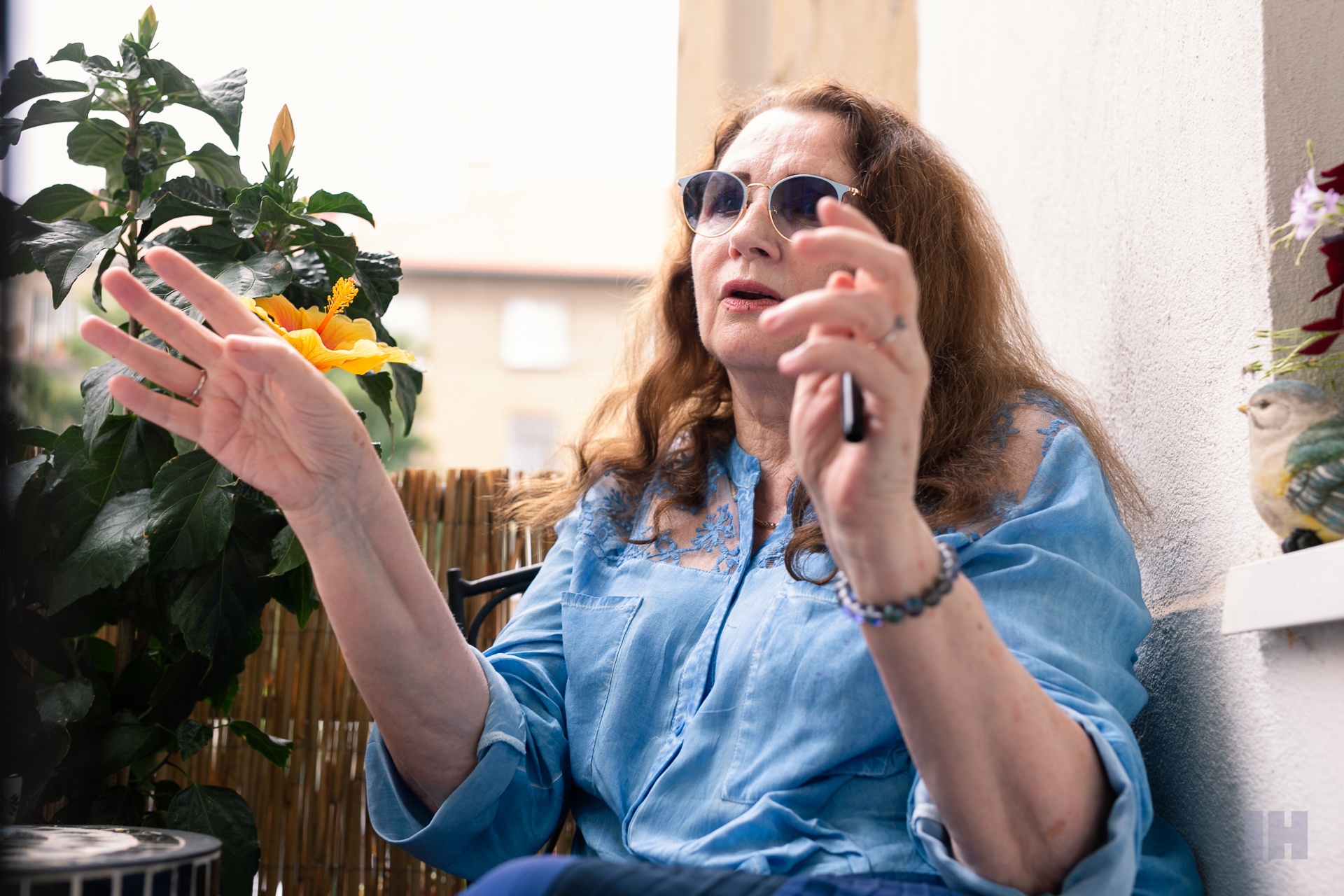
Fragmentary style
When asked what she considers her greatest success, she answers without hesitation – these are translations of her books and excerpts from plays into dozens of world languages. These are translations not only into European languages such as English, German, Polish, Hungarian and Ukrainian but also Arabic, Persian and Chinese, for example. “It’s a strange feeling – joyful and surprising, although it never lasts long, as is the case with other awards. It is encouraging to see that my work leaves an echo, even far abroad. The notion of space and time is pointless.”
And what does the writer herself like to read? Jana names Slovak authors such as Jana Juráňová, Etela Farkašová, Mila Haugová, Alena Sabuchová, Svetlana Žuchová, Mária Modrovich, Dominika Madro and Michaela Rosová. Recently, however, the work of foreign writers Annie Ernaux and Allie Smith has resonated with her the most.“I consider them both unique authors because they deal with the topic of a new, modern woman that interests me. Ernaux uses a fragmentary style and often writes autobiographically. Smith is more intimate, capturing the subtle psychological states of man, and is critical of contemporary politics. It is worth saying that I understand female authors somehow better than male ones. Which does not mean that I do not like works written by men. And there are really many in the history of literature. At present, however, it is female authors who are entering the literary worlds very vigorously and significantly.”

